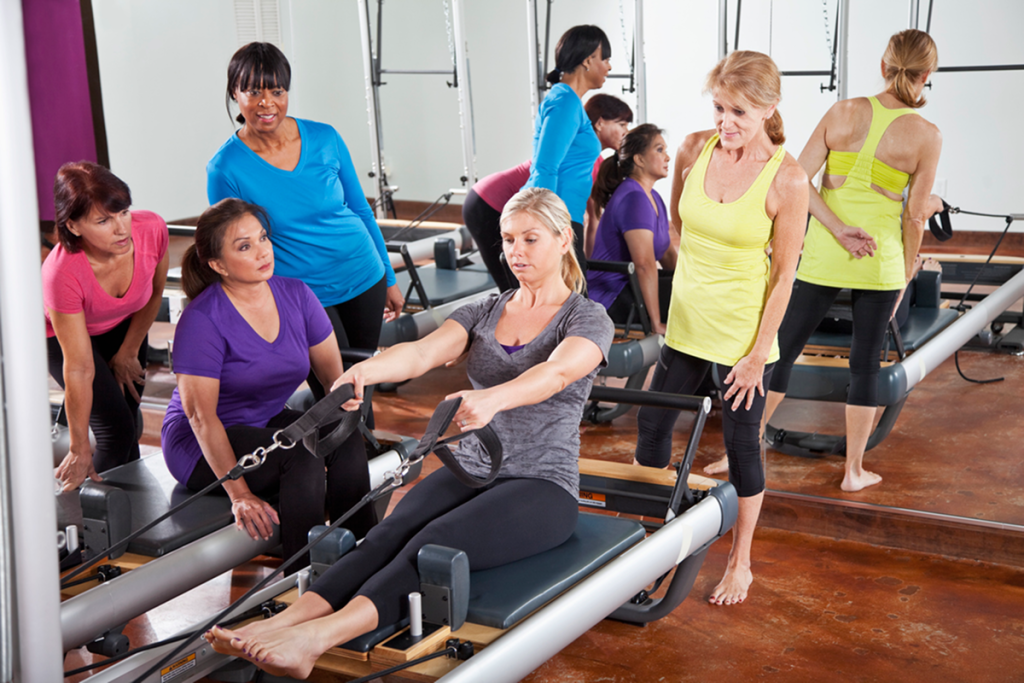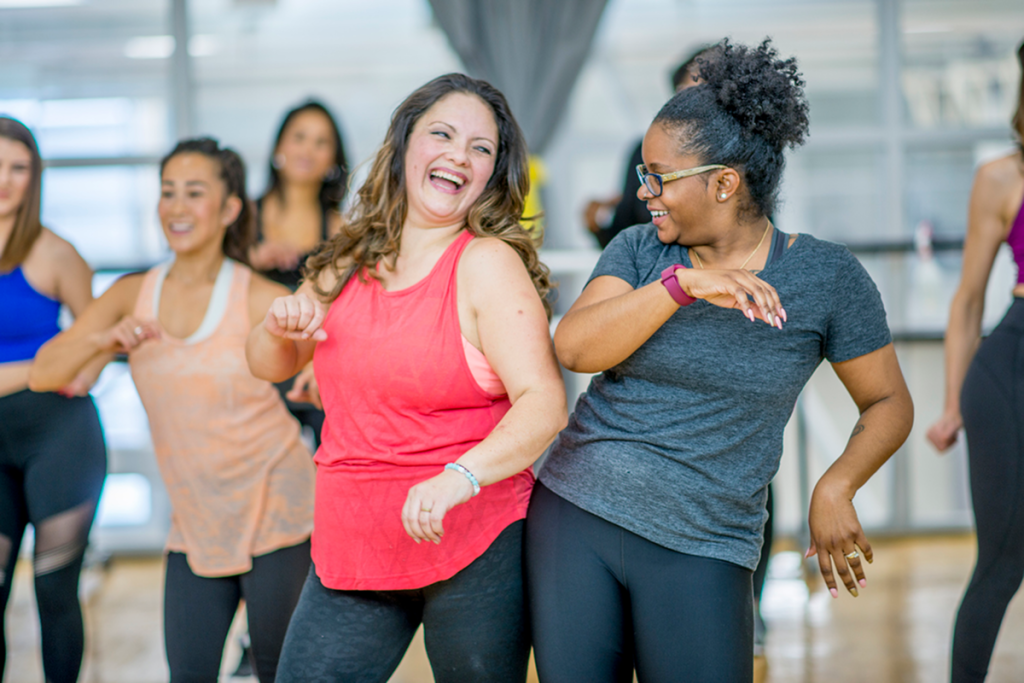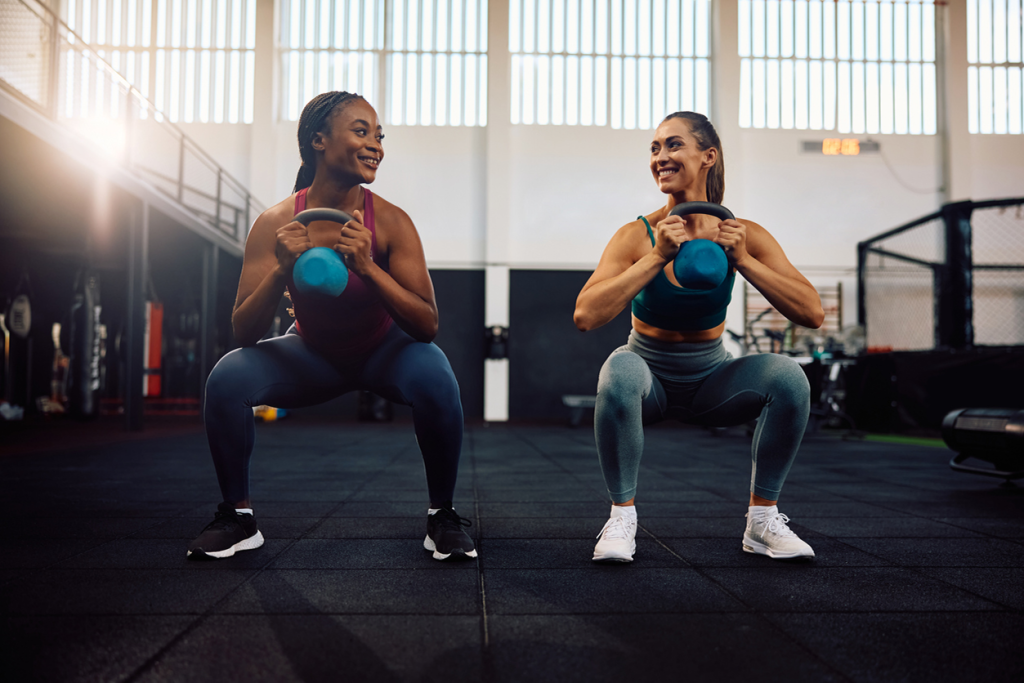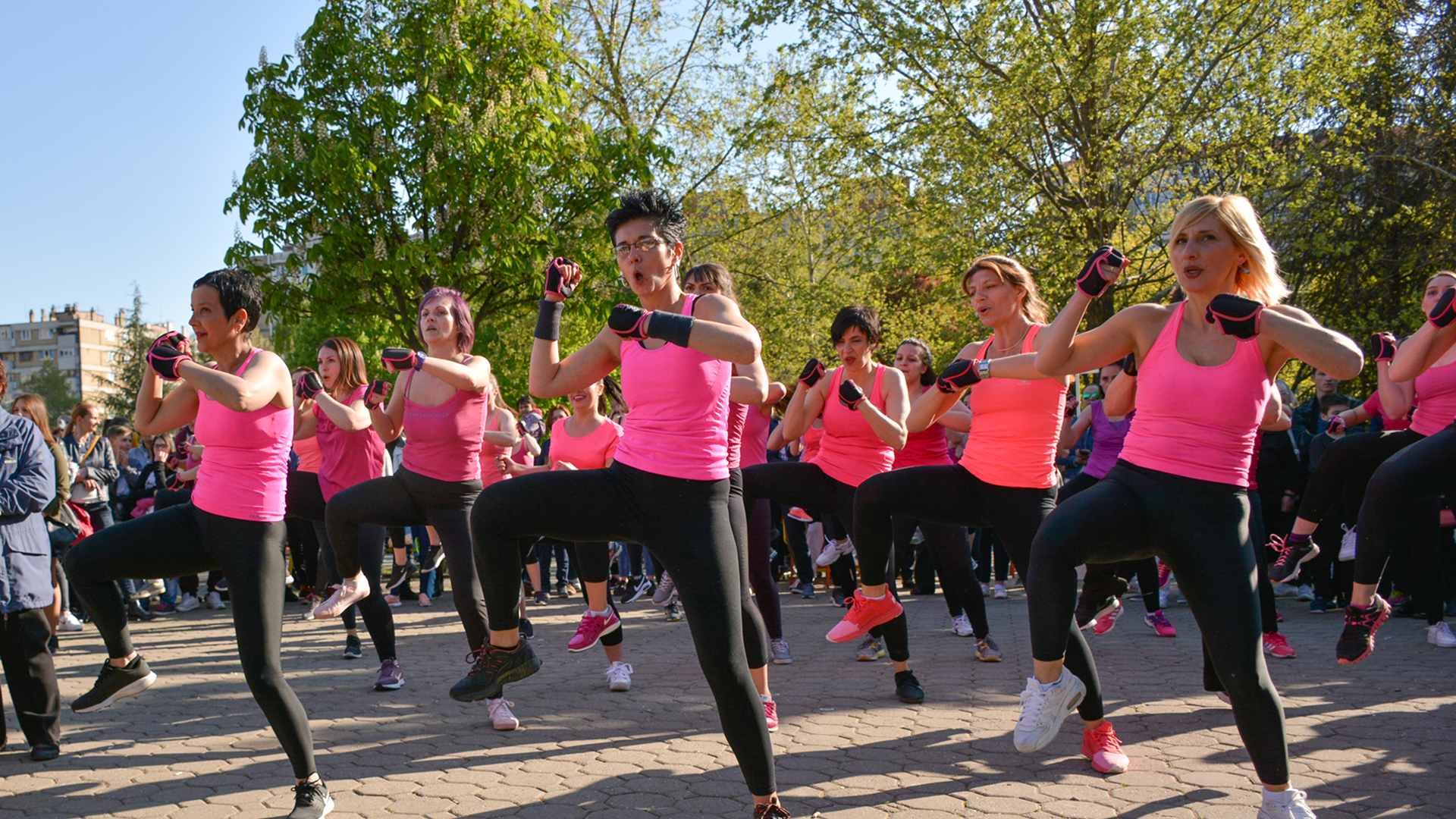How Does Exercise Affect Cancer Cells?
Exercise plays a significant role in both treating breast cancer and preventing a recurrence. Here are some key ways exercise helps:
Reduces Inflammation: Regular physical activity helps lower inflammation in the body, which is linked to breast cancer development.
Maintains Healthy Weight: Exercise helps control weight, reducing body fat. Female body fat has estrogen receptors. Being “over-fat” will stimulate estrogen + breast cancers.
Boosts Immune System: Physical activity strengthens the immune system, helping the body fight off breast cancer cells.
Regulates Hormones: Exercise helps eliminate xenohormones (EDCs) that contribute to breast cancer development.
Improves Mental Health: For breast cancer survivors, exercise reduces standard of care treatment side effects, improves mood, and enhances sleep and overall well-being.
Breast Cancer Cells: grow in low-oxygen environments (hypoxia). Being sedentary encourages this condition in your body. Exercise does just the opposite – it improves overall oxygen circulation in the body, which supports the immune system – -thereby creating a hostile environment for breast cancer cells.


I’ve never worked out before where do I start
Consult Your Doctor: Before beginning make sure you are cleared to walk. Rarely will your doctor say no to walking. Start here. A 30 minute walk every day.
Set Realistic Goals: Once cleared walk from your house as fast as you can that you can keep for 15 minutes. Then turn around and repeat until you get home – then you’re done!
Create a Schedule: Pick a time of day when other responsibilities and activities won’t interrupt your walk. Stay true to yourself with your walk.
Warm Up and Cool Down: this is easy with walking because you will naturally do both.
Stay Hydrated: Drink clean water before leaving the house and upon returning.
Eat Well: Eating the BCA way will fuel your body with nutritious foods and give you plenty of energy for your daily walk.
Listen to Your Body: Pay attention to how you feel during and after exercise. Increase your walking speed and incline as your body adapts to your walking routine.
Add in Additional Activities: Once you get into a routine of walking every day without fail, add in 15 minutes of Pilates 3 times a week. Find a Youtube video for beginners. When you get that into your weekly routine then look for another physical activity you really love. That’s your workout for life!
I just had surgery how do I exercise?


How to exercise in between surgeries
Workouts During Successful Surveillance
Breast Cancer Surveillance is a life-long “new normal” part of life for any woman who has been diagnosed with breast cancer and completed her initial treatment, regardless of the stage. This is just a new fact of her life.
Continued consistent workouts will help you significantly to keep the upper-hand on the breast cancer that showed up in your body. As we said before Breast Cancer is relentless – you have to be more so. Everything you did to put it down you have to keep doing to keep it down.
Continued consistent workouts are an integral part of your continued successful surviving and thriving.


Strength Training
Building muscle enhances overall health by improving metabolism, hormone regulation, immune function, and inflammation control, all of which are critical for breast cancer recovery and to help prevent recurrence. Combine a strength training workout with an aerobic exercise – walking, dancing or swimming for a full breast cancer annihilating workout!
For breast cancer patients, strength training specifically helps:
- Reduce cancer: related fatigue and improve energy levels.
- Preserve lean body mass: countering muscle-wasting effects of treatment.
- Enhance treatment tolerance: by improving circulation and reducing side effects.
- Lower recurrence risk: by regulating estrogen levels and reducing body fat.
- Boosts immune response: stimulating anti-cancer activity through muscle-derived molecules.
- Even moderate resistance training: has been linked to better survival outcomes and quality of life in breast cancer patients!
Pilates
This is a low impact fitness method that strengthens muscles, especially core muscles. while improving posture, flexibility and body awareness. it combines controlled movements with breath work to build balanced strength and enhance mind-body connection.
BCA Pilates Routines
These workouts are tailored specifically for breast cancer recovery, focusing on rebuilding strength, improving mobility, and supporting lymphatic flow. These routines are mindful of post-surgical limitations, fatigue, and emotional well-being. Breast Cancer patients are encouraged to adapt these as their healing progresses.
Beginner Recovery Routine (Post-surgery, cleared by surgeon)
Focus: Gentle mobility, breathwork, and lymphatic support
Diaphragmatic Breathing: 2 minutes (hands on ribs, inhale deeply)
Shoulder Rolls: 10 slow reps forward, then 10 slow reps backwards
Wall Angels: 8 reps (arms slide up/down wall)
Pelvic Tilt: 10 reps (lying on back, gentle core activation)
Bridge (Supported with a small pillow under the lower back): 8 reps, hold last for 5 seconds
Seated Arm Circles: 10 reps each direction
Tip: Focus on breath and ease of movement. Adaptation: Repeat for a a second set when able. Advance to next level as tolerated.
Intermediate Recovery Routine (6–12 weeks post-op or as cleared by surgeon)
Focus: Core strength, posture, and upper-body mobility
Modified Hundred (knees bent, arms low): 30 seconds, lie on your back with knees bent and feet on the mat, arms reaching forward, and pump your arms gently while inhaling for 5 counts and exhaling for 5, repeating for up to 100 counts
Wall Push-Ups: 8–10 reps
Side-Lying Leg Lifts: 10 reps per side
Spine Stretch Forward: 5 reps
Resistance Band Rows (light band): 10 reps
Cat-Cow Stretch: 6 slow reps
Tip: Get clearance from your surgeon for overhead movements if you’ve had lymph node removal or radiation.
Advanced Recovery Routine (3+ months post-treatment, with strength return)
Focus: Full-body strength, endurance, and confidence
Roll-Up (with bent knees if needed): 8 reps, lie flat, extend arms overhead, then curl up one vertebra at a time to reach toward your toes. It’s a fluid sit-up with a focus on precision and breath.
Swimming (prone, alternate arms/legs): 30 seconds
Side Plank (on knees): 10 seconds per side
Push-Up (on knees or full): 6 reps
Standing Arm Presses (light weights or band): 10 reps
Mermaid Stretch: 3 reps per side, a seated side-bending movement that opens the torso and lengthens the spine
Tip: Listen to your body. Fatigue and range of motion may vary day to day.
Combine the above routines with 30-45 minutes of walking, slow, moderate or brisk for a full workout that will speed your healing!
Weight Lifting
Strength training is necessary for an optimal healing outcome. Take it slow and be consistent, making it a plan for life. Weight training can be done at home. Used weights from the thrift store work just fine! It’s annoying to have to start over if you are an experienced weight lifter but it’s very necessary for your healing. It will pickup fast once you hit the 8 week mark and you will be back to your normal routine quickly after that time frame if you are on a normal healing path.
Focus: Gentle reactivation, posture, and lymphatic support
Wall Push-Ups:2 sets of 8
Seated Bicep Curls (1–2 lb weights): 2 sets of 10
Shoulder Shrugs:2 sets of 10
Standing March with Light Weights: 30 seconds
Pelvic Tilts (on mat): 10 reps
Breathing with Arm Raises: 5 slow reps
Tip: Prioritize breath and range of motion over weight. Avoid overhead lifts if lymph nodes were removed

Intermediate (6–12 weeks or as tolerated)
Focus: Strengthening major muscle groups, improving endurance
Incline Push-Ups (on bench or wall): 3 sets of 8
Overhead Press (light dumbbells, if cleared): 2 sets of 8
Resistance Band Rows: 2 sets of 10
Bodyweight Squats: 2 sets of 10
Side-Lying Leg Lifts: 10 reps per side
Standing Lateral Raises (light weights): 2 sets of 8
Tip: Use resistance bands for joint-friendly strength building. Monitor for swelling or fatigue
Advanced (3+ months post-treatment, with strength return)
Focus: Full-body strength, balance, and confidence
Dumbbell Deadlifts (light to moderate weight): 3 sets of 8
Push-Ups (on knees or full): 3 sets of 10
Bent-Over Rows: 3 sets of 8
Overhead Press (moderate weight): 3 sets of 8
Step-Ups with Dumbbells: 2 sets of 10 per leg
Plank Hold: 30 seconds
Tip: Focus on form and rest between sets. Progress slowly and celebrate every gain.
Kettlebells
This is a strength and conditioning routine using a cast-iron weight with a handle to perform dynamic, functional movements like swings, squats, and presses. It builds muscle, improves cardiovascular fitness, and enhances balance and coordination – all in one compact tool.
Adaption for Breast Cancer Recovery: Avoid weight over what your surgeon allows for your stage of recovery and avoid overhead movements until cleared by your surgeon. Once cleared by your surgeon this workout will fast-track you on to a great recovery! Move up to a heavier Kettlebell for a more challenging workout.
Beginner Kettlebell Recovery Routine (15–20 min)
Use a light kettlebell (2–8 lbs) or substitute with a small dumbbell.
Kettlebell Deadlift (Hip Hinge): 2 sets of 8 Strengthens glutes and hamstrings while protecting the back.
Stand with feet hip-width apart, kettlebell between feet.
Hinge at hips, keep back flat, and lift kettlebell by standing tall.
Seated Shoulder Press (If Cleared): 2 sets of 6–8 Improves shoulder mobility and strength.
Sit upright, press kettlebell overhead slowly, then lower with control.
Use one arm at a time; avoid if overhead motion causes discomfort.
Kettlebell Halo (Around the Head): 2 sets of 5 each direction Mobilizes shoulders and upper back.
Hold kettlebell by the horns and slowly circle it around your head.
Keep elbows close and movement smooth.
Goblet Squat (Holding Kettlebell at Chest): 2 sets of 8 Builds lower body strength and core stability.
Hold kettlebell at chest, squat down keeping chest lifted and knees aligned.
March in Place with Kettlebell Hold: 30 seconds Improves balance and engages core.
Hold kettlebell at chest and gently march in place.
Cool Down: Arm Circles + Deep Breathing: 1 minute Promotes lymphatic flow and relaxation.

Emotional Support is critical to your healing. Even if everything goes smoothly with your treatment a cancer diagnosis is stressful. Reach out to your support network to help you emotionally on a regular basis. Use Duality to fill in the gaps!
References
- Cleveland Clinic – Research shows t regular exercise before and after a breast cancer diagnosis minimizes recurrence risk by 25% & improves survival outcomes
- National Cancer Institute (NCI) – Evidence that physical activity benefits cancer survivors, reducing inflammation, improving immune function, and lowering recurrence with better survival outcomes.
- Breast Cancer Research Foundation (BCRF) – Research indicates that maintaining an active lifestyle post-diagnosis significantly improves prognosis


